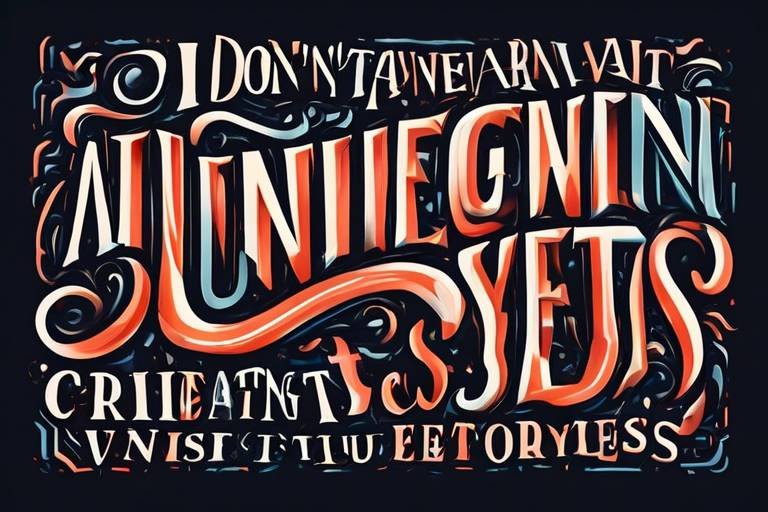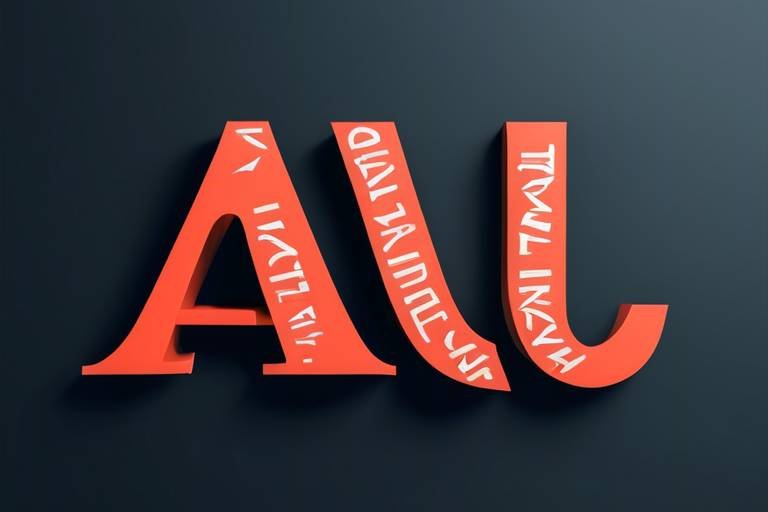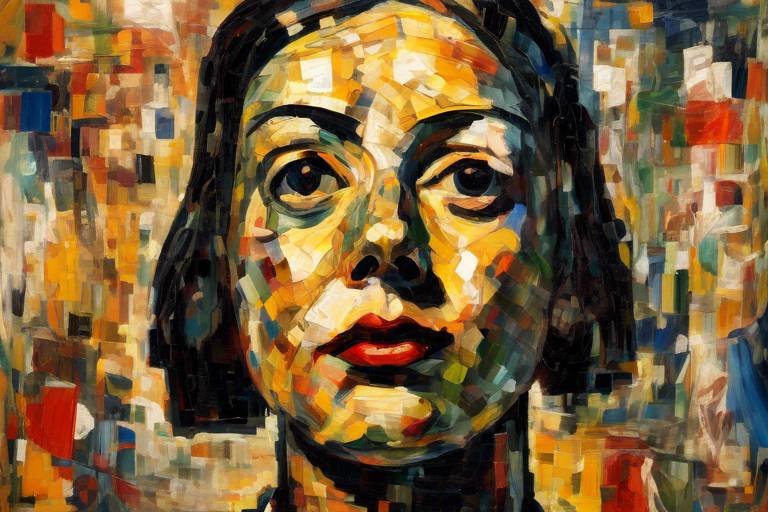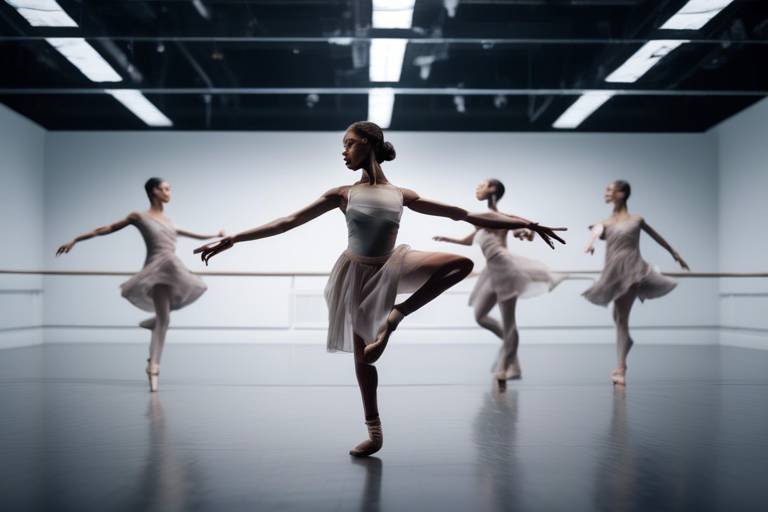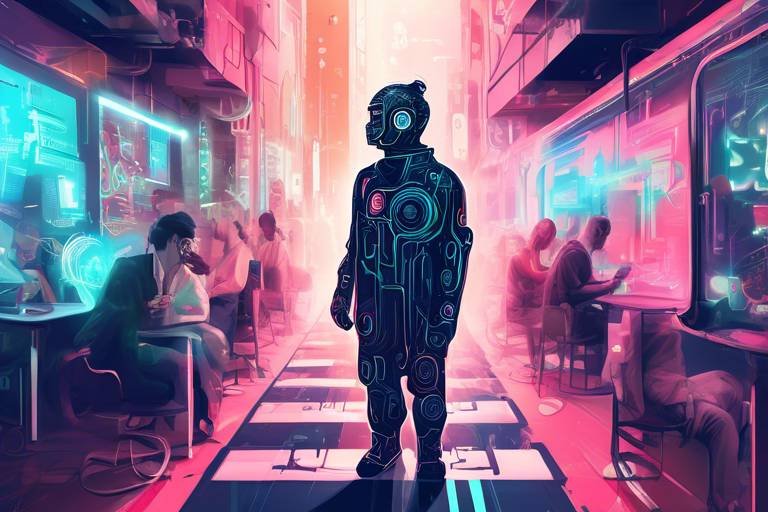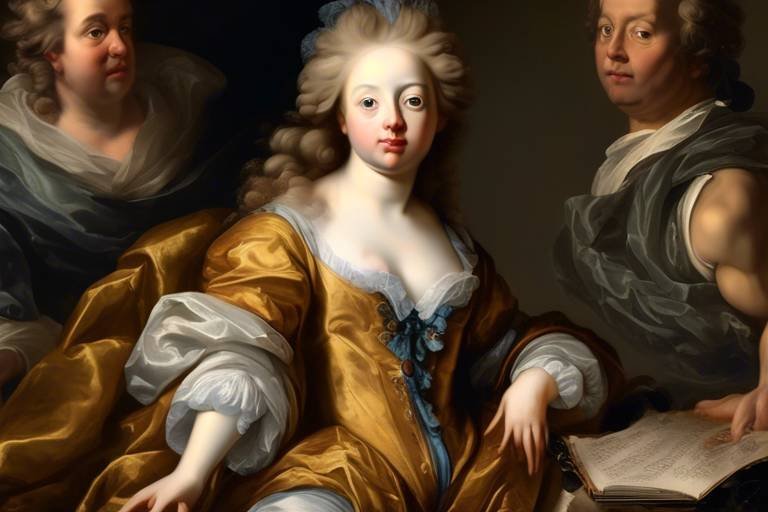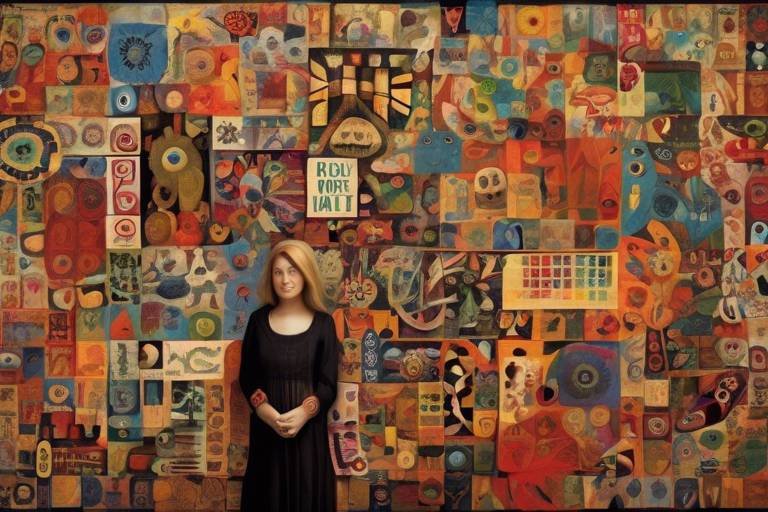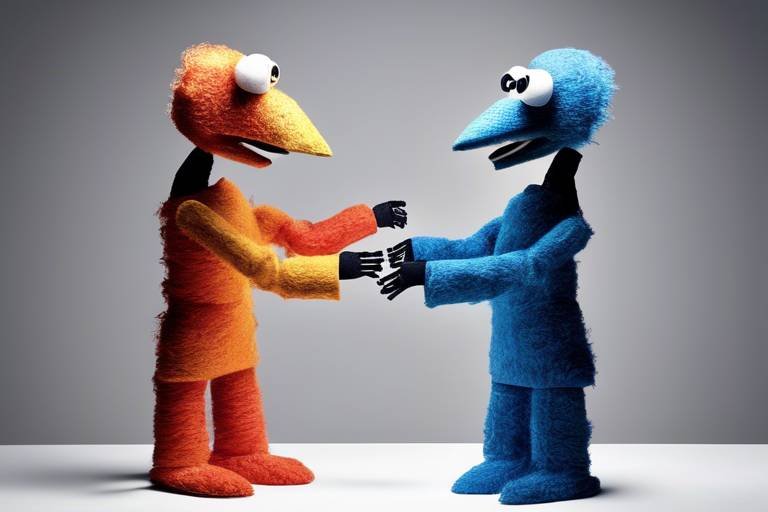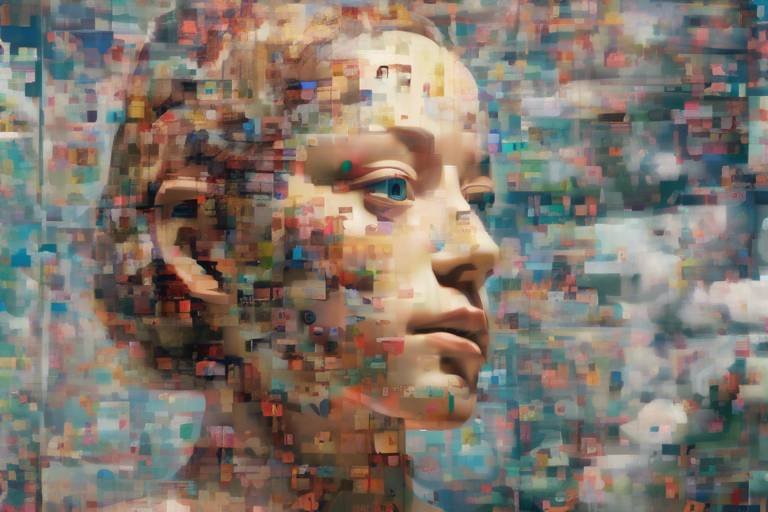Exploring the Depths of AI in Abstract Art
The intersection of artificial intelligence and abstract art is not just a fleeting trend; it's a revolution that is reshaping how we perceive creativity. Imagine a world where machines can create art that resonates with human emotions, challenging our traditional understanding of what art truly is. This article takes you on a journey through this fascinating landscape, exploring how technology is influencing creativity, fostering collaborations between artists and AI, and redefining the very essence of art in our digital age. As we dive deeper, we will uncover the profound implications of this synergy and how it is paving the way for a new era of artistic expression.
In recent years, AI technology has emerged as a powerful tool in the art world, opening up new avenues for creativity that were once unimaginable. Artists are now harnessing the capabilities of AI to produce stunning pieces that challenge the boundaries of human imagination. From algorithmically generated paintings to immersive installations, AI-generated art is making waves and gaining recognition among both artists and collectors. This transformation is not merely about machines creating art; it's about a profound shift in how we understand and engage with the creative process.
Abstract art is a genre that defies conventional representation, opting instead to evoke emotions through the interplay of color, form, and texture. It invites viewers to interpret meaning based on their own experiences and feelings, making it a deeply personal form of expression. With the advent of AI, the interpretation and creation of abstract art have taken on new dimensions. AI algorithms can analyze vast datasets of existing artworks, learning to mimic styles and techniques while also introducing unique elements that push the boundaries of abstraction.
To fully appreciate the role of AI in abstract art, it's crucial to delve into its historical roots. Abstract art emerged in the early 20th century, led by pioneers like Wassily Kandinsky and Piet Mondrian. These artists sought to break free from traditional forms and explore the emotional and spiritual dimensions of art. The evolution of abstract art has been marked by various movements, each contributing to its rich tapestry. Understanding this history allows us to see how AI is not just a tool but a continuation of an ongoing dialogue in the art world.
Several key movements have shaped the trajectory of abstract art, each leaving an indelible mark on its evolution. Notable among them are:
- Abstract Expressionism: Characterized by spontaneous, automatic, or subconscious creation, this movement emphasized the artist's emotional state.
- Geometric Abstraction: Focused on the use of geometric forms and a limited color palette, this movement aimed to achieve a sense of order and harmony.
These movements have influenced AI-generated works, as algorithms analyze and replicate the stylistic elements that define them, leading to innovative interpretations that challenge our perceptions of art.
Throughout history, numerous artists have made significant contributions to the world of abstract art. Figures like Jackson Pollock and Mark Rothko have paved the way for contemporary innovations, inspiring both human and machine creativity. Their work not only laid the groundwork for future artists but also provides a rich source of data for AI systems to learn from, further intertwining the realms of technology and artistic expression.
AI employs a variety of techniques in generating abstract art, with neural networks and generative algorithms being at the forefront. These methods allow AI to analyze existing artworks, learn patterns, and create new pieces that can evoke similar emotional responses. The implications of these techniques are profound, as they not only expand the toolkit available to artists but also raise questions about the nature of creativity itself. Can a machine truly be creative, or is it merely reflecting human creativity through its algorithms?
The collaboration between artists and AI technologies is a fascinating development that is pushing creative boundaries. Artists are increasingly partnering with AI to explore new ideas and techniques, resulting in artworks that blend human intuition with computational precision. This partnership redefines the roles of artists, transforming them from sole creators to facilitators of a dialogue between human and machine. As these collaborations flourish, they challenge our understanding of authorship and originality in art.
Examining specific case studies reveals the dynamic interactions between artists and AI. For instance, the collaboration between artist Refik Anadol and AI technologies has resulted in stunning installations that merge data and aesthetics, creating immersive experiences for viewers. These partnerships not only produce groundbreaking abstract artworks but also spark conversations about the future of art in an AI-driven world.
As AI continues to influence art creation, ethical questions arise regarding authorship and originality. Who owns an artwork created by an AI? Is it the artist who programmed the algorithm, the AI itself, or the data that fed it? These questions highlight the need for new ethical frameworks that can address the complexities of AI in the art world. As we navigate this uncharted territory, it is essential to consider the implications of AI on artistic integrity and the value we place on creativity.
Q: Can AI create original art?
A: Yes, AI can generate original pieces by learning from existing art styles and techniques, but the debate about the originality of AI-generated art continues.
Q: How do artists use AI in their creative process?
A: Artists use AI to explore new ideas, generate unique artworks, and push the boundaries of creativity by collaborating with algorithms.
Q: What are the ethical implications of AI in art?
A: Ethical implications include questions of authorship, originality, and the potential impact of AI on the value and integrity of art.

The Rise of AI in Art Creation
In recent years, the art world has witnessed a remarkable transformation, primarily driven by the advent of artificial intelligence. This technology has not only redefined how art is created but has also opened up new avenues for creativity that were previously unimaginable. Imagine a world where machines can generate stunning visual pieces that evoke emotion, challenge perceptions, and even provoke thought—this is the reality we are stepping into. AI-generated art is emerging from the shadows, gaining recognition among artists, collectors, and critics alike. It’s as if we are witnessing a renaissance, but instead of paintbrushes and canvases, we have algorithms and data sets.
AI's ability to analyze vast amounts of information allows it to create art that is both innovative and reflective of human emotions. By leveraging neural networks and generative algorithms, AI systems can produce works that mimic the styles of renowned artists or even create entirely new forms that defy categorization. This fusion of technology and creativity raises fascinating questions: Can a machine truly understand art? Can it create something genuinely original? As we dive deeper into this topic, it becomes clear that the answers are as complex as the art itself.
Moreover, the rise of AI in art creation has sparked a wave of interest from both traditional artists and tech enthusiasts. Many artists are now embracing AI as a tool rather than viewing it as a competitor. This partnership allows for a collaborative approach where human intuition and machine precision come together to explore new artistic frontiers. For instance, artists can input their own styles and preferences into AI systems, which then generate unique pieces that reflect their vision while incorporating elements that only a machine could conceive.
As AI-generated art gains traction, it's important to consider its implications for the future of creativity. The art market is evolving, with AI pieces being sold at auctions for staggering amounts, challenging conventional notions of value and originality. Collectors are beginning to see the potential in these works, not just as novelties, but as significant contributions to the art world. This shift is reminiscent of how photography was once dismissed as a mere mechanical reproduction of reality, only to be embraced later as a legitimate art form.
In summary, the rise of AI in art creation is not just a trend; it represents a fundamental shift in how we perceive creativity itself. As we continue to explore the intersection of technology and art, we must remain open to the endless possibilities that lie ahead. The future of art is here, and it’s being painted with the brushstrokes of artificial intelligence.
- What is AI-generated art? AI-generated art refers to artwork created with the assistance of artificial intelligence, often using algorithms and neural networks to produce unique visual pieces.
- Can AI create original art? Yes, AI can create original art by analyzing existing styles and generating new compositions that reflect various artistic influences.
- How do artists collaborate with AI? Artists collaborate with AI by using it as a tool to enhance their creative process, allowing them to explore new ideas and techniques.
- What are the ethical considerations surrounding AI art? Ethical considerations include questions of authorship, originality, and the potential impact on traditional artists and the art market.

Understanding Abstract Art
Abstract art is like a thrilling roller coaster ride for the senses; it challenges our perceptions and invites us to explore emotions through a kaleidoscope of color and form. Unlike traditional art, which often aims to depict reality, abstract art breaks free from the confines of representational accuracy. Instead, it focuses on the essence of the subject matter, evoking feelings and thoughts that can be as varied as the colors on a palette. Have you ever stood before a vibrant canvas and felt an inexplicable connection? That’s the magic of abstract art!
This unique artistic movement began to gain traction in the early 20th century, paving the way for artists to express their inner thoughts and emotions in ways that words often fail to capture. Artists like Wassily Kandinsky and Piet Mondrian were pioneers, using shapes and colors to convey complex ideas and feelings. Their work serves as a reminder that art is not just about what we see, but also about what we feel. Today, AI is stepping into this dynamic arena, interpreting and creating abstract art that challenges our understanding of creativity.
So, what exactly is the significance of abstract art in today’s world? It’s a reflection of our times—a response to the chaos and complexity of modern life. In a world overflowing with information and stimuli, abstract art provides a sanctuary for contemplation. It allows viewers to engage with their emotions and interpretations, making each experience uniquely personal. Moreover, as AI begins to play a role in this space, it raises fascinating questions about creativity and the very definition of art itself.
AI interprets abstract art in ways that can be both surprising and enlightening. By analyzing patterns, colors, and forms, AI systems can generate new artworks that resonate with the principles of abstraction. For instance, a neural network might learn from thousands of abstract artworks, synthesizing this knowledge to create a piece that embodies the spirit of abstract expressionism. This not only showcases the capabilities of technology but also enriches the dialogue around what constitutes art in the digital age.
In summary, understanding abstract art is about embracing the unknown and appreciating the emotional journey it offers. It encourages us to look beyond the surface and delve into the depths of our own feelings and interpretations. As we stand at the crossroads of technology and creativity, the fusion of AI and abstract art promises to redefine the boundaries of artistic expression. Who knows what new horizons await us as we continue to explore this fascinating intersection?

Historical Context of Abstract Art
To truly appreciate the role of AI in abstract art, it’s vital to dive into its rich historical context. Abstract art didn’t just appear out of nowhere; it evolved through a series of movements and philosophies that challenged the status quo of traditional representation. It all began in the early 20th century, when artists started to explore the idea that art could exist without direct references to the physical world. This shift was revolutionary, akin to a butterfly emerging from its chrysalis, breaking free from the constraints of realism.
One of the earliest movements that paved the way for abstract art was Fauvism, which emerged in the early 1900s. Artists like Henri Matisse and André Derain used bold colors and simplified forms to express emotions rather than depict reality. This was a significant departure from the detailed, realistic portrayals that dominated the art world. The Fauves believed that color could convey feelings, much like music can evoke emotions without lyrics. Following Fauvism, the German Expressionists took a similar approach, emphasizing emotional experience over physical representation.
As we moved further into the 20th century, the Abstract Expressionism movement took center stage. Artists like Jackson Pollock and Mark Rothko explored the idea of spontaneity and the subconscious in their works. Pollock’s famous drip paintings, for instance, are a testament to the idea that the act of creation is just as important as the finished product. These artists were not just painting; they were engaging in a dialogue with their materials, which is a concept that resonates deeply with modern AI-generated art.
Throughout the history of abstract art, several key movements have significantly influenced its development:
- Futurism: Emphasized speed, technology, and modernity.
- Suprematism: Focused on geometric forms and limited color palettes, pioneered by Kazimir Malevich.
- Constructivism: Merged art with social purpose, promoting art as a tool for social change.
- Minimalism: Stripped art down to its essentials, emphasizing simplicity and form.
Each of these movements contributed to the rich tapestry of abstract art, setting the stage for contemporary innovations. The evolution of abstract art is not just a timeline of styles; it's a narrative of shifting perceptions about what art can be. As we witness the rise of AI in this field, we see a continuation of this narrative, where technology becomes another tool in the artist's toolkit, much like the paintbrush or canvas.
In conclusion, understanding the historical context of abstract art allows us to appreciate the groundbreaking ways in which AI can contribute to this ongoing dialogue. As artists continue to push boundaries and explore new techniques, the fusion of human creativity and artificial intelligence promises to redefine the very essence of art itself.
- What is abstract art? Abstract art is a form of art that does not attempt to represent external reality but instead uses shapes, colors, and forms to achieve its effect.
- How has AI influenced abstract art? AI has introduced new techniques and methods for creating art, allowing for innovative collaborations between technology and human creativity.
- Can AI be considered an artist? This is a debated topic; while AI can generate art, the question of authorship and creativity remains complex.
- What are some famous examples of AI-generated art? Notable examples include works created by algorithms like DeepDream and collaborations between artists and AI platforms.

Key Movements in Abstract Art
Abstract art isn't just a style; it's a vibrant tapestry woven from various influential movements that have shaped its evolution over the decades. To truly appreciate the role of AI in abstract art, it's essential to delve into these key movements that have paved the way for contemporary expressions. Each movement brought its unique flavor, challenging the norms and expanding the boundaries of what art could be.
One of the most significant movements in this realm is Abstract Expressionism. Emerging in the post-World War II era, this movement sought to express emotional experience rather than physical reality. Artists like Jackson Pollock and Mark Rothko used spontaneous brushwork and vibrant colors to convey feelings directly onto the canvas. Their works are often seen as a bridge between the artist's inner emotional world and the abstract forms that emerged from it. Pollock's drip paintings, for instance, are not just visually striking; they invite viewers to contemplate the chaotic nature of human emotion and existence.
Next, we have Geometric Abstraction, which took a different approach by emphasizing shapes and forms over emotional expression. Artists such as Piet Mondrian and Kazimir Malevich focused on the purity of geometric forms, using simple lines and colors to create harmonious compositions. This movement laid the groundwork for modern design and architecture, demonstrating that art could be both aesthetically pleasing and intellectually stimulating. In this context, AI can analyze and replicate these geometric patterns, creating new works that resonate with the principles of this movement while introducing innovative twists.
Another notable movement is Color Field Painting, which emerged from Abstract Expressionism but shifted the focus onto the use of color as the primary element of the artwork. Artists like Mark Rothko and Helen Frankenthaler utilized large expanses of color to evoke a sense of tranquility and introspection. The emotional impact of these color fields can be profound, often leading viewers into a meditative state. AI technologies can now explore these color relationships, generating artworks that echo the emotional depth of Color Field Painting while experimenting with new combinations and interactions.
Moreover, Minimalism introduced a radically different perspective by stripping art down to its essentials. Artists like Donald Judd and Agnes Martin focused on simplicity, using limited colors and forms to emphasize the artwork's materiality. This movement challenged audiences to engage with art in a more profound way, often reflecting on their perceptions and experiences. AI's ability to analyze and recreate minimalist designs allows it to contribute to this movement, offering new interpretations that can provoke thought and discussion.
In conclusion, these key movements in abstract art are not just historical footnotes; they are the lifeblood of the genre, continuously influencing how we perceive and create art today. As AI steps into this vibrant arena, it draws inspiration from these movements, pushing the boundaries of creativity and redefining the very essence of what art can be. The interplay between traditional abstract art and AI-generated works opens up exciting possibilities for future artistic endeavors, inviting both artists and audiences to explore the uncharted territories of creativity.

Influential Abstract Artists
When we think about the realm of abstract art, a few towering figures come to mind—artists whose innovative approaches and daring visions have shaped the very fabric of this captivating genre. One cannot discuss the evolution of abstract art without mentioning the likes of Pablo Picasso, Wassily Kandinsky, and Jackson Pollock. Each of these artists brought their unique flavor to the canvas, challenging conventional forms and pushing the boundaries of what art could represent.
Pablo Picasso, often considered one of the most influential artists of the 20th century, co-founded the Cubist movement. His work, characterized by fragmented forms and multiple perspectives, laid the groundwork for abstract art. Picasso's ability to deconstruct reality and present it in a new light resonates deeply within the abstract realm, influencing countless artists who followed. For instance, his famous piece, Les Demoiselles d'Avignon, is a striking example of how he broke away from traditional representation, paving the way for abstraction.
Moving on, we have Wassily Kandinsky, a pioneer of abstract art who believed that art should evoke emotions through color and form rather than represent the physical world. In his seminal work, Composition VII, Kandinsky utilized vibrant colors and dynamic shapes to create a visual symphony that speaks directly to the soul. He famously stated, “Color is the keyboard, the eyes are the harmonies, the soul is the piano with many strings.” This philosophy resonates with contemporary artists exploring the intersection of AI and abstract art, as they seek to elicit emotional responses through their creations.
Then there’s Jackson Pollock, the quintessential figure of the Abstract Expressionist movement. Pollock's revolutionary drip painting technique transformed the canvas into a dynamic field of movement and energy. His works, such as No. 5, 1948, are not just paintings; they are experiences that invite viewers to immerse themselves in the chaos and rhythm of the creative process. Pollock’s approach has inspired a new generation of artists, including those utilizing AI to replicate or reinterpret his techniques, blending human creativity with machine learning.
In addition to these iconic figures, the abstract art movement has been enriched by numerous other artists, including Mark Rothko, known for his color field paintings that evoke deep emotional responses, and Frida Kahlo, whose surrealist style often blurred the lines between abstraction and representation. These artists, among many others, have contributed to a rich tapestry of abstract art, each leaving an indelible mark that continues to inspire and influence.
As we delve deeper into the world of abstract art, it becomes evident that the legacies of these influential artists are not just historical footnotes; they are living sources of inspiration for contemporary creators, including those working at the intersection of art and technology. The advent of AI in art creation is a testament to the enduring impact of these pioneers. Their explorations into the unknown have opened the floodgates for new artistic expressions that challenge our understanding of creativity and originality.
In conclusion, the contributions of these influential abstract artists have laid the groundwork for the exciting developments we see today, where traditional methods are intertwined with cutting-edge technology. As we look forward, it’s fascinating to consider how AI will continue to evolve the landscape of abstract art, potentially creating new movements and redefining what it means to be an artist in the digital age.
- What is abstract art? Abstract art is a genre that emphasizes color, form, and line over realistic representation, often evoking emotional responses rather than depicting objects or scenes from reality.
- How has AI influenced abstract art? AI has introduced new techniques and tools for artists, allowing them to explore innovative ways of creating art and collaborating with technology to produce unique works.
- Who are some notable abstract artists? Influential abstract artists include Pablo Picasso, Wassily Kandinsky, Jackson Pollock, Mark Rothko, and Frida Kahlo, each contributing significantly to the genre.

AI Techniques in Art Generation
Artificial Intelligence (AI) has become a powerful ally in the world of art, particularly in the realm of abstract art generation. By harnessing advanced technologies such as neural networks and generative algorithms, AI can create stunning visual compositions that challenge our understanding of creativity. Imagine a machine that not only learns from existing artworks but also innovates and produces pieces that evoke emotions and provoke thoughts. This intersection of technology and creativity is not just a trend; it’s a revolution in how we perceive art.
At the heart of AI art generation are neural networks, which are designed to mimic the way human brains process information. These networks analyze vast datasets of images, learning patterns, styles, and techniques from renowned artists. Once trained, they can generate new artwork that reflects the learned styles, producing pieces that are both unique and reminiscent of traditional art forms. For instance, a neural network may be fed thousands of abstract paintings, allowing it to understand the nuances of color, shape, and composition. The result? A brand new piece that could easily be mistaken for a human creation.
Another fascinating technique is the use of generative adversarial networks (GANs). This method involves two neural networks working against each other: one generates images, while the other evaluates them. This 'competition' leads to the production of increasingly sophisticated and visually striking artworks. The GAN process can be likened to a game of chess, where each player continuously improves their strategy based on the other's moves. As a result, the artworks created through GANs often exhibit a level of depth and complexity that captivates viewers.
Moreover, AI can also utilize style transfer techniques, where it takes the stylistic elements of one artwork and applies them to another. This allows for the creation of hybrid pieces that blend different artistic influences, resulting in truly innovative outcomes. For example, an AI could take the color palette of a Jackson Pollock painting and combine it with the geometric forms of Piet Mondrian, creating a new abstract masterpiece that honors both artists while forging its own identity.
As we explore these techniques, it’s essential to recognize their implications for the art world. AI-generated art challenges the very definitions of creativity and authorship. Who is the true artist—the AI, the programmer, or the original artists whose works inspired the algorithms? This question opens up a broader dialogue about the future of art in a digital age, where the lines between human and machine creativity are increasingly blurred.
To summarize, the techniques employed in AI art generation are not just tools; they are gateways to new forms of expression. As technology continues to evolve, so too will the possibilities for artistic creation. The collaboration between human intuition and AI's computational power promises to redefine the landscape of abstract art, inviting artists and audiences alike to experience art in ways we have yet to imagine.
- What is AI-generated art? AI-generated art refers to artworks created with the assistance of artificial intelligence technologies, often utilizing algorithms and neural networks to produce unique pieces.
- How does AI learn to create art? AI learns by analyzing large datasets of existing artworks, identifying patterns, styles, and techniques that it can replicate or innovate upon.
- Can AI art be considered original? The originality of AI art is a subject of debate, as it often draws inspiration from human-created works. The question of authorship is complex and varies depending on the context of creation.
- What are some examples of AI art? Notable examples include works created by GANs and neural networks, which have been showcased in galleries and exhibitions, often receiving critical acclaim.
- Is AI going to replace human artists? While AI can produce art, it is unlikely to replace human artists entirely. Instead, it serves as a tool that can enhance creativity and collaboration in the artistic process.

The Collaboration Between Artists and AI
In today's rapidly evolving art landscape, the collaboration between artists and artificial intelligence (AI) is not just a trend; it's a revolutionary movement that is reshaping our understanding of creativity. Imagine a world where a painter and a computer algorithm work side by side, merging human intuition and emotion with the computational power of AI. This partnership is not only pushing the boundaries of what art can be but also challenging our traditional notions of authorship and originality.
Artists are beginning to see AI as a new tool for expression rather than a replacement for their creative instincts. With AI technologies, artists can explore uncharted territories of creativity, producing works that may have been unimaginable just a few years ago. For instance, AI can analyze vast amounts of data from existing artworks, identifying patterns and styles that can inspire new creations. This process allows artists to experiment with different techniques and styles, leading to unique outcomes that blend human creativity with machine learning.
One of the most exciting aspects of this collaboration is the ability to generate art in real-time. With the help of generative algorithms, artists can create pieces that evolve based on audience interaction or environmental factors. Imagine walking into a gallery where the artwork changes as you move closer, responding to your presence. This dynamic nature of AI-generated art creates an immersive experience that engages viewers on a deeper level.
Moreover, the collaboration between artists and AI opens up opportunities for interdisciplinary projects. Artists are teaming up with computer scientists, engineers, and data analysts to create innovative works that transcend traditional boundaries. For example, a recent project combined visual art with sound, where an AI algorithm generated abstract visuals in response to musical compositions. This synergy not only enhances the artistic experience but also sparks conversations about the future of creativity.
However, this collaboration is not without its challenges. As artists increasingly rely on AI, questions regarding the authenticity of their work arise. Who is the true creator—the artist or the algorithm? This dilemma has led to a growing need for new frameworks that address authorship and ownership in the age of AI. As the art world grapples with these questions, it becomes essential to establish guidelines that respect both human creativity and technological innovation.
To further illustrate the impact of artist-AI collaborations, consider the following table showcasing notable partnerships:
| Artist | AI Tool Used | Notable Work |
|---|---|---|
| Refik Anadol | Machine Learning Algorithms | “Infinity Room” |
| Mario Klingemann | Neural Networks | “Memories of Passersby I” |
| Anna Ridler | GANs (Generative Adversarial Networks) | “Mosaic Virus” |
As we move forward, the collaboration between artists and AI is likely to evolve further, leading to new forms of expression that we can only begin to imagine. This partnership not only enhances the creative process but also encourages a dialogue about the future of art in a digital age. Are we ready to embrace this new frontier where human creativity and artificial intelligence coexist harmoniously? Only time will tell.
- What is AI-generated art? AI-generated art refers to artworks created with the assistance of artificial intelligence technologies, which can analyze data and generate unique pieces based on learned patterns.
- How do artists use AI in their work? Artists use AI as a tool to explore new creative possibilities, generate ideas, and even create artworks that respond to audience interaction or environmental changes.
- What are the ethical implications of AI in art? The ethical implications include questions about authorship, originality, and the need for new frameworks to address ownership in the age of AI-generated works.
- Can AI replace human artists? While AI can assist in the creative process, it is unlikely to replace human artists. Instead, it serves as a complementary tool that enhances human creativity.

Case Studies of Artist-AI Collaborations
In the fascinating realm of artist-AI collaborations, numerous projects have emerged that not only challenge our understanding of creativity but also redefine the boundaries of art itself. One of the most notable examples is the partnership between the acclaimed artist Refik Anadol and AI technology. Anadol's work, which often incorporates large datasets and machine learning algorithms, culminated in breathtaking installations that transform data into mesmerizing visual experiences. His project, Archive Dreaming, utilized AI to analyze a vast collection of images and videos, generating a dynamic visual narrative that captivates audiences. This collaboration highlights how AI can serve as a tool for artists, enabling them to explore new dimensions of their creative vision.
Another compelling case study is the work of Mario Klingemann, a pioneering figure in the field of AI-generated art. Klingemann's exploration of neural networks and generative algorithms has led to the creation of stunning pieces that challenge the very notion of authorship. His project, Neural Glitch, showcases how AI can produce unique artworks that reflect the intricacies of human emotion and perception. By training AI systems on vast datasets of existing artworks, Klingemann allows the machine to learn from the past while producing something entirely new and unexpected. This fusion of human insight and machine learning creates a dialogue between the artist and the algorithm, pushing the boundaries of what art can be.
Additionally, the collaboration between Anna Ridler and AI provides another intriguing insight into this evolving partnership. Ridler's work often involves the meticulous curation of data, which she then feeds into AI systems to create art that is both personal and innovative. Her project, Fall of the House of Usher, is a prime example where she combined her own drawings with AI-generated visuals, resulting in a unique narrative experience. This approach emphasizes the significance of human input in the artistic process, showcasing how artists can harness AI not just as a creator but as a collaborator, enriching their work with new perspectives.
These case studies illustrate a broader trend in the art world, where artists are not merely using AI as a tool but are engaging in a collaborative dialogue with technology. This partnership raises intriguing questions about the nature of creativity and authorship in the digital age. As we continue to explore these collaborations, we witness the emergence of a new artistic landscape that embraces the unpredictable, celebrates innovation, and challenges our traditional perceptions of art.
- What is the role of AI in art creation? AI serves as a tool and collaborator for artists, enabling them to explore new creative avenues and generate unique artworks.
- How do artists ensure their creative input is preserved when collaborating with AI? Artists often curate and guide the data and algorithms used in their projects, ensuring that their vision remains central to the creative process.
- Are AI-generated artworks considered original? This is a complex question, as originality in art can be subjective. However, many believe that the blend of human creativity and AI innovation leads to truly unique pieces.

Ethical Considerations in AI Art
As we plunge deeper into the realm of AI-generated art, we find ourselves at a crossroads of creativity and ethics. The advent of artificial intelligence in the art world brings with it a host of ethical dilemmas that challenge our traditional notions of authorship, originality, and the very definition of art itself. One of the most pressing questions is: Who owns an artwork created by an AI? Is it the programmer who wrote the algorithms, the artist who provided the input, or the AI itself? This ambiguity can lead to disputes over copyright and ownership, raising significant concerns for artists and technologists alike.
Moreover, the question of authenticity looms large. When an AI creates a piece of art, is it a genuine expression of creativity, or merely a sophisticated imitation of human creativity? This leads us to ponder the essence of art: is it the process that matters, or the end result? The emotional connection that art evokes in its audience is often tied to the artist's intent, and with AI, that intent becomes nebulous. Can a piece of art generated by an algorithm resonate with viewers in the same way as a work created by a human hand?
In addition to issues of ownership and authenticity, we must also consider the implications of bias in AI algorithms. AI systems learn from data, and if that data reflects societal biases, the artwork produced may inadvertently perpetuate those biases. For instance, if an AI is trained primarily on works from a specific demographic, it may struggle to generate diverse and inclusive art. This raises critical questions about representation and the responsibility of artists and technologists to ensure that AI art reflects a wide range of perspectives.
Furthermore, the rise of AI in art creation poses a threat to traditional artists. As AI-generated works gain popularity and value, there is a concern that human artists may be undervalued or overshadowed. This raises ethical questions about the future of artistic professions and the potential for AI to disrupt established creative industries. Should we embrace AI as a tool that enhances human creativity, or should we be wary of its implications for the artistic community?
To navigate these complex ethical landscapes, it's essential for artists, technologists, and policymakers to engage in open dialogues about the implications of AI in art. Developing new ethical frameworks that address these concerns will be crucial as we continue to explore the intersection of technology and creativity. By fostering a collaborative environment, we can ensure that AI serves as a complement to human artistry rather than a replacement. Ultimately, the goal should be to enhance the richness of our artistic expressions while safeguarding the values that underpin the art world.
- What are the main ethical concerns regarding AI-generated art? The primary concerns include authorship, originality, bias in algorithms, and the potential devaluation of traditional artists.
- Who owns the rights to an AI-created artwork? Ownership can be complicated, involving the programmer, the artist who provided input, and the AI itself.
- Can AI-generated art evoke the same emotional response as human-created art? While AI can produce visually stunning pieces, the emotional connection may differ due to the lack of human intent behind the creation.
- How can we ensure diversity in AI-generated art? It is crucial to train AI systems on diverse datasets to avoid perpetuating biases and to reflect a wide range of perspectives.
Frequently Asked Questions
- What is AI-generated abstract art?
AI-generated abstract art refers to artworks created using artificial intelligence technologies. These artworks often utilize algorithms and neural networks to produce unique pieces that challenge traditional notions of creativity and authorship.
- How does AI influence creativity in art?
AI influences creativity by offering new tools and methods for artists to explore. It can generate unexpected patterns, colors, and forms that artists might not consider, thus expanding their creative horizons and pushing the boundaries of traditional art.
- Can AI create art independently?
While AI can generate art independently, it typically requires initial input or parameters set by human artists. The collaboration between AI and artists is essential, as it allows for a blend of human intuition and machine learning capabilities.
- What are the ethical concerns surrounding AI in art?
Ethical concerns include questions about authorship, originality, and the potential for AI to replicate existing styles without proper attribution. As AI becomes more integrated into the art world, new frameworks will be needed to address these issues.
- How has abstract art evolved with the introduction of AI?
Abstract art has evolved significantly with AI, as new technologies allow for innovative expressions that were previously unimaginable. Artists can now experiment with AI tools to create works that reflect contemporary themes and techniques.
- What are some notable collaborations between artists and AI?
Notable collaborations include projects where artists have worked with AI to produce unique installations or exhibitions. These partnerships showcase the potential for AI to enhance artistic expression and challenge conventional art practices.
- How do collectors view AI-generated art?
Collectors are increasingly recognizing the value of AI-generated art, seeing it as a new frontier in the art world. Many appreciate its innovative nature and the discussions it sparks about the future of creativity and technology.



